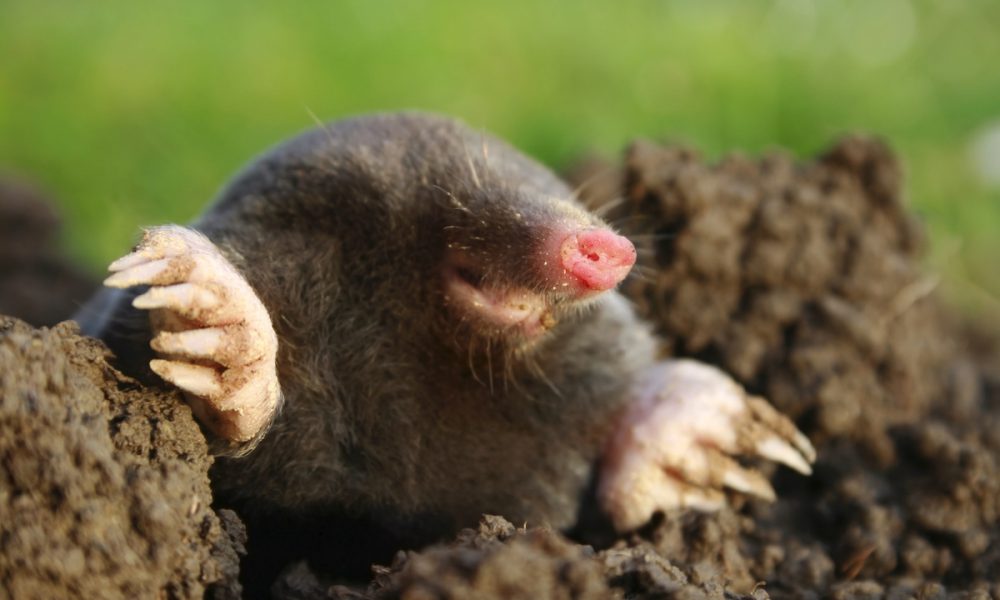
There are so many animals, insects, and rodents running around your property and potentially damaging your lawn. Have you ever heard of a mole? How do you know if a mole is doing any damage to your yard? Read more to find out about these creatures.
Not a Rodent
Moles are insectivores, not rodents, as most people think. Insectivores are a mammal that eats insects. They are small mammals that spend their lives below the ground surface, ripping up gardens and suburban lawns searching for food.
Appearance
A mole’s pointed nose distinguishes them from meadow voles, gophers, and shrews. Their noses extend well in front of their mouths, and heir small eyes and ears are concealed by fur.
Moles are small. They are about five to eight inches long and weigh around three to five ounces. They have thick bodies with short, velvety fur which conceals their tiny eyes and ears.
Lifespan
A mole’s average lifespan is two to three years.
Activity
Moles are active year all year round. But they are the most active in the spring and fall. They create surface ridges and tunnels at the top 6 to 12 inches of a yard where the majority of the food supply is located. Because the food source is deeper in the ground during winter moles, moles burrow deeper into the soil in search of food.
Moles have enlarged, webbed feet, which they use as paddles to “swim” through the soil. While they are moving quickly underground, they leave behind distinct trails that disturb and uproot plants, flowers, crops, and shrubs. These trails are dangerous to homeowners because they create an uneven area perfect for tripping.
Diet
Moles love to eat, and they typically consume between 70% to 100% percent of their body weight in one single day and can dig up to 150 feet of tunnels per day in search of food. Earthworms make up to 85% of their diet, but they’ll also happily eat grubs, beetles, snails, insects, and other small underground invertebrates.
Habitat
Moles are underground creatures and rarely come to the surface. Occasionally, specific species of moles like the Star-Nosed Mole prefer moist areas like wet meadows, bogs, and marshes and will come above ground. The Eastern Mole prefers drier soil found in meadows, fields and woodland areas.
Reproduction
Mating season for moles is in early spring with a gestation period between 4 to 6 weeks. One litter is born each year with two to seven baby moles. As soon as the babies grow, they leave home to establish their own tunnel systems.
Moles vs. Voles
Moles and voles are often confused together. They are quite different.
Moles lift the soil upwards tunneling underground while making your yard “squishy” when you walk on it. Voles tunnel under the snowpack in winter, but remain above ground and create those “highways” in the grass you see when it melts.
If you have any problems or issues with moles or other nuisance wildlife, contact Houseman Services at 866-964-PEST as soon as possible so we can treat your home or property?
Houseman Services is the only complete service company in the Athens, GA area. We provide Weed control, fertilization, shrub care, mulch & pine straw, sod, annual plantings, irrigation, and commercial & residential lawn maintenance. We are also state-certified and licensed in wood destroying organisms (termite control), household pest control, public health, and turf & ornamental weed control. We are licensed to control and treat mosquitoes, termites, all pest problems, and turf & ornamental weed control. Contact the professionals at Houseman Services and set up a free inspection of your yard. We have been servicing homes and businesses in the Athens, Clarke County area since 1985!